Automatic Sleep-Arousal Detection with Single-Lead EEG Using Stacking Ensemble Learning
Abstract
:1. Introduction
2. Related Work
3. Proposed Sleep Arousal Detector
3.1. Dataset and Its Pre-Processing
3.2. Feature Extraction
3.2.1. Band Power Features
3.2.2. Expert-Defined Features
3.3. Stacking Ensemble Learning
3.3.1. Waveform Raw Data for 1d Cnn Networks
3.3.2. Band Power Features for Rnn Networks
3.3.3. Expert-Defined Features for Random Forests
3.4. Stacking Ensemble
4. Experiments
4.1. Evaluation Metrics
4.2. Results
4.2.1. Training Results
4.2.2. Testing Results
5. Conclusions
Author Contributions
Funding
Institutional Review Board Statement
Informed Consent Statement
Data Availability Statement
Conflicts of Interest
References
- Ting, H.; Huang, R.J.; Lai, C.H.; Chang, S.W.; Chung, A.H.; Kuo, T.Y.; Chang, C.H.; Shih, T.S.; Lee, S.D. Evaluation of Candidate Measures for Home-Based Screening of Sleep Disordered Breathing in Taiwanese Bus Drivers. Sensors 2014, 14, 8126–8149. [Google Scholar] [CrossRef] [PubMed] [Green Version]
- Galvão, F.; Alarcão, S.M.; Fonseca, M.J. Predicting Exact Valence and Arousal Values from EEG. Sensors 2021, 21, 3414. [Google Scholar] [CrossRef] [PubMed]
- Vandekerckhove, M.; Wang, Y.L. Emotion, emotion regulation and sleep: An intimate relationship. AIMS Neurosci. 2017, 5, 1–17. [Google Scholar] [CrossRef] [PubMed]
- Balakrishnan, G.; Burli, D.; Behbehani, K.; Burk, J.; Lucas, E. Comparison of a Sleep Quality Index between Normal and Obstructive Sleep Apnea Patients. In Proceedings of the 27th Annual Conference IEEE Engineering in Medicine and Biology, Shanghai, China, 1–4 September 2005; pp. 1154–1157. [Google Scholar] [CrossRef]
- Bonnet, M.H.; Doghramji, K.; Roehrs, T.; Stepanski, E.J.; Sheldon, S.H.; Walters, A.S.; Wise, M.; Chesson, A.L.J. The scoring of arousal in sleep: Reliability, validity, and alternatives. J. Clin. Sleep Med. 2007, 3, 133–145. [Google Scholar] [CrossRef] [PubMed] [Green Version]
- Johnstone, S.; Blackman, R.; Bruggemann, J. EEG from a single-channel dry-sensor recording device. Clin. EEG Neurosci. 2012, 43, 112–120. [Google Scholar] [CrossRef] [PubMed]
- Cho, S.; Lee, J.; Park, H.; Lee, K. Detection of Arousals in Patients with Respiratory Sleep Disorders Using a Single Channel EEG. In Proceedings of the 2005 IEEE Engineering in Medicine and Biology 27th Annual Conference, Shanghai, China, 1–4 September 2005; pp. 2733–2735. [Google Scholar] [CrossRef]
- Cho, S.P.; Choi, H.S.; Lee, H.K.; Lee, K.J. Detection of EEG Arousals in Patients with Respiratory Sleep Disorder. In Proceedings of the World Congress on Medical Physics and Biomedical Engineering 2006, Seoul, Korea, 27 August–1 September 2006; Magjarevic, R., Nagel, J.H., Eds.; Springer: Berlin/Heidelberg, Germany, 2007; pp. 1131–1134. [Google Scholar]
- Liang, Y.; Leung, C.; Miao, C.; Wu, Q.; McKeown, M.J. Automatic Sleep Arousal Detection Based on C-ELM. In Proceedings of the 2015 IEEE/WIC/ACM International Conference on Web Intelligence and Intelligent Agent Technology (WI-IAT), Singapore, 6–9 December 2015; Volume 2, pp. 376–382. [Google Scholar] [CrossRef]
- Ugur, T.; Erdamar, A. An efficient automatic arousals detection algorithm in single channel EEG. Comput. Methods Programs Biomed. 2019, 173, 131–138. [Google Scholar] [CrossRef] [PubMed]
- Olesen, A.N.; Jennum, P.; Mignot, E.; Sorensen, H.B.D. Deep transfer learning for improving single-EEG arousal detection. In Proceedings of the 42nd Annual International Conference of the IEEE Engineering in Medicine and Biology Society (EMBC), Montreal, QC, Canada, 20–24 July 2020; pp. 99–103. [Google Scholar] [CrossRef]
- Álvarez Estévez, D.; Moret-Bonillo, V. Identification of Electroencephalographic Arousals in Multichannel Sleep Recordings. IEEE Trans. Biol. Eng. 2011, 58, 54–63. [Google Scholar] [CrossRef] [PubMed]
- Liu, Y.; Liu, H.; Yang, B. Automatic Sleep Arousals Detection From Polysomnography Using Multi-Convolution Neural Network and Random Forest. IEEE Access 2020, 8, 176343–176350. [Google Scholar] [CrossRef]
- Wickramaratne, S.D.; Mahmud, M.S. Automatic Detection of Respiratory Effort Related Arousals With Deep Neural Networks From Polysomnographic Recordings. In Proceedings of the 42nd Annual International Conference of the IEEE Engineering in Medicine and Biology Society (EMBC), Montreal, QC, Canada, 20–24 July 2020; pp. 154–157. [Google Scholar] [CrossRef]
- Shahrbabaki, S.S.; Dissanayaka, C.; Patti, C.R.; Cvetkovic, D. Automatic detection of sleep arousal events from polysomnographic biosignals. In Proceedings of the 2015 IEEE Biomedical Circuits and Systems Conference (BioCAS), Atlanta, GA, USA, 22–24 October 2015; pp. 1–4. [Google Scholar] [CrossRef]
- Zhou, G.; Li, R.; Zhang, S.; Wang, J.; Ma, J. Multimodal Sleep Signals-Based Automated Sleep Arousal Detection. IEEE Access 2020, 8, 106157–106164. [Google Scholar] [CrossRef]
- Subramanian, S.; Chakravarty, S.; Chamadia, S. Arousal Detection in Obstructive Sleep Apnea Using Physiology-Driven Features. In Proceedings of the 2018 Computing in Cardiology Conference (CinC), Maastricht, The Netherlands, 23–26 September 2018; Volume 45, pp. 1–4. [Google Scholar] [CrossRef]
- Shen, Y. Effectiveness of a Convolutional Neural Network in Sleep Arousal Classification Using Multiple Physiological Signals. In Proceedings of the 2018 Computing in Cardiology Conference (CinC), Maastricht, The Netherlands, 23–26 September 2018; Volume 45, pp. 1–4. [Google Scholar] [CrossRef]
- Warrick, P.; Homsi, M.N. Sleep Arousal Detection From Polysomnography Using the Scattering Transform and Recurrent Neural Networks. In Proceedings of the 2018 Computing in Cardiology Conference (CinC), Maastricht, The Netherlands, 23–26 September 2018; Volume 45, pp. 1–4. [Google Scholar] [CrossRef]
- Warrick, P.A.; Lostanlen, V.; Nabhan Homsi, M. Hybrid scattering-LSTM networks for automated detection of sleep arousals. Physiol. Meas. 2019, 40, 1–18. [Google Scholar] [CrossRef] [PubMed]
- Howe-Patterson, M.; Pourbabaee, B.; Benard, F. Automated Detection of Sleep Arousals From Polysomnography Data Using a Dense Convolutional Neural Network. In Proceedings of the 2018 Computing in Cardiology Conference (CinC), Maastricht, The Netherlands, 23–26 September 2018; Volume 45, pp. 1–4. [Google Scholar] [CrossRef]
- Ghassemi, M.M.; Moody, B.E.; Wei, H.; Lehman, L.; Song, C.; Li, Q.; Sun, H.; Mark, R.G.; Westover, M.B.; Clifford, G.D. You Snooze, You Win: The PhysioNet/Computing in Cardiology Challenge 2018. In Proceedings of the 2018 Computing in Cardiology Conference (CinC), Maastricht, The Netherlands, 23–26 September 2018. [Google Scholar]
- Bonnet, M.; Carley, D.; Carskadon, M.; Easton, P.; Guilleminault, C.; Harper, R.; Hayes, B.; Hirshkowitz, M.; Ktonas, P.; Keenan, S.; et al. EEG arousals: Scoring rules and examples. A preliminary report from the Sleep Disorders Atlas Task Force of the American Sleep Disorder Association. Sleep 1992, 15, 173–184. [Google Scholar]
- Plesinger, F.; Viscor, I.; Nejedly, P.; Andrla, P.; Halamek, J.; Jurak, P. Automated Sleep Arousal Detection Based on EEG Envelograms. In Proceedings of the 2018 Computing in Cardiology Conference (CinC), Maastricht, The Netherlands, 23–26 September 2018; Volume 45, pp. 1–4. [Google Scholar] [CrossRef]
- Liu, J.V.; Yaggi, H.K. Characterization of Arousals in Polysomnography Using the Statistical Significance of Power Change. In Proceedings of the 2018 IEEE Signal Processing in Medicine and Biology Symposium (SPMB), Philadelphia, PA, USA, 1 December 2018; pp. 1–6. [Google Scholar] [CrossRef]
- Babadi, B.; Brown, E.N. A Review of Multitaper Spectral Analysis. IEEE Trans. Biomed. Eng. 2014, 61, 1555–1564. [Google Scholar] [CrossRef] [PubMed]
- Prerau, M.J.; Brown, R.E.; Bianchi, M.T.; Ellenbogen, J.M.; Purdon, P.L. Sleep Neurophysiological Dynamics Through the Lens of Multitaper Spectral Analysis. Physiology 2017, 32, 60–92. [Google Scholar] [CrossRef] [PubMed] [Green Version]
- Lees, J.M.; Park, J. Multiple-taper spectral analysis: A stand-alone C-subroutine. Comput. Geosci. 1995, 21, 199–236. [Google Scholar] [CrossRef]
- Kalambet, Y.; Kozmin, Y.; Samokhin, A. Comparison of integration rules in the case of very narrow chromatographic peaks. Chemom. Intell. Lab. Syst. 2018, 179, 22–30. [Google Scholar] [CrossRef]
- Hjorth, B. EEG analysis based on time domain properties. Electroencephalogr. Clin. Neurophysiol. 1970, 29, 306–310. [Google Scholar] [CrossRef]
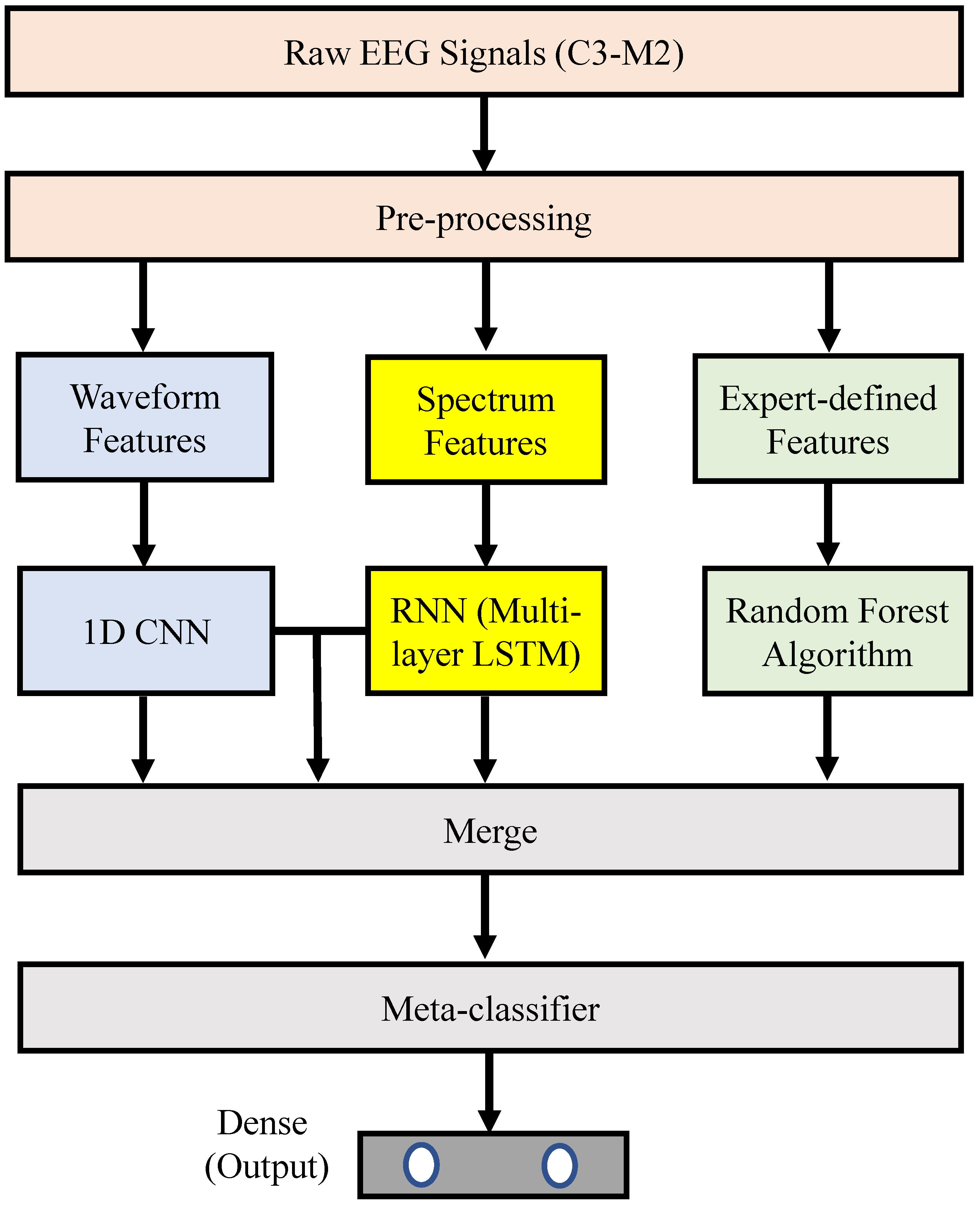
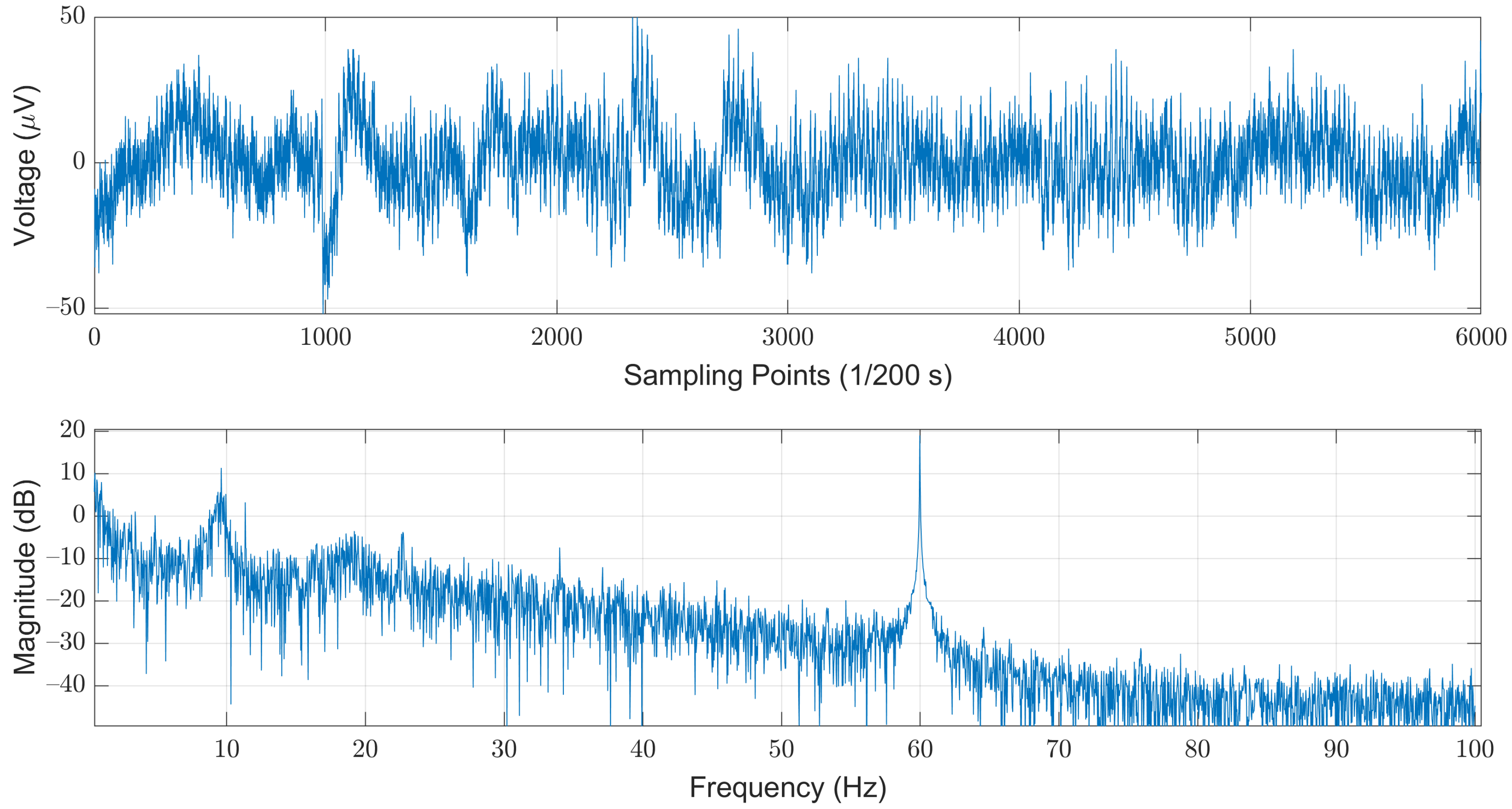
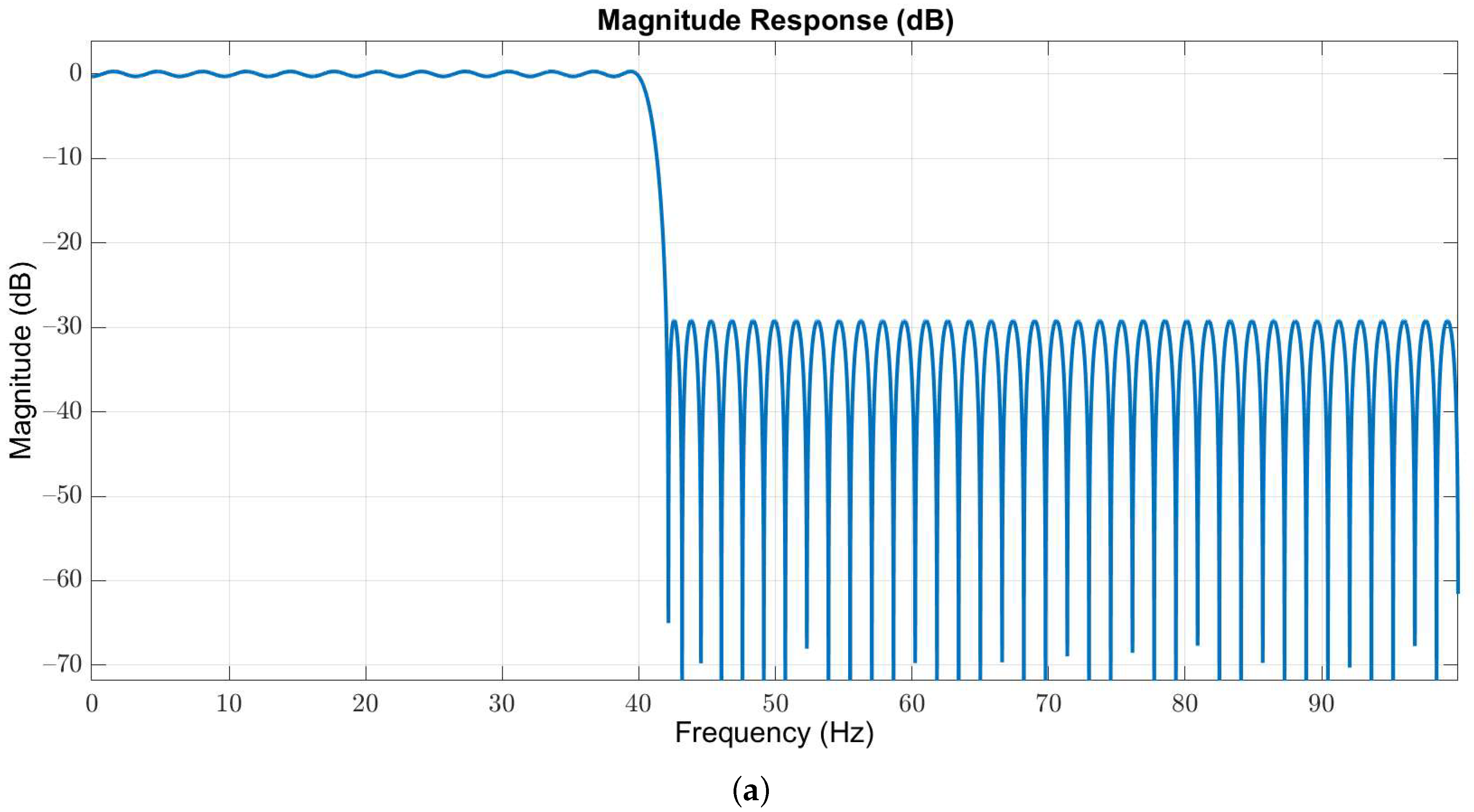
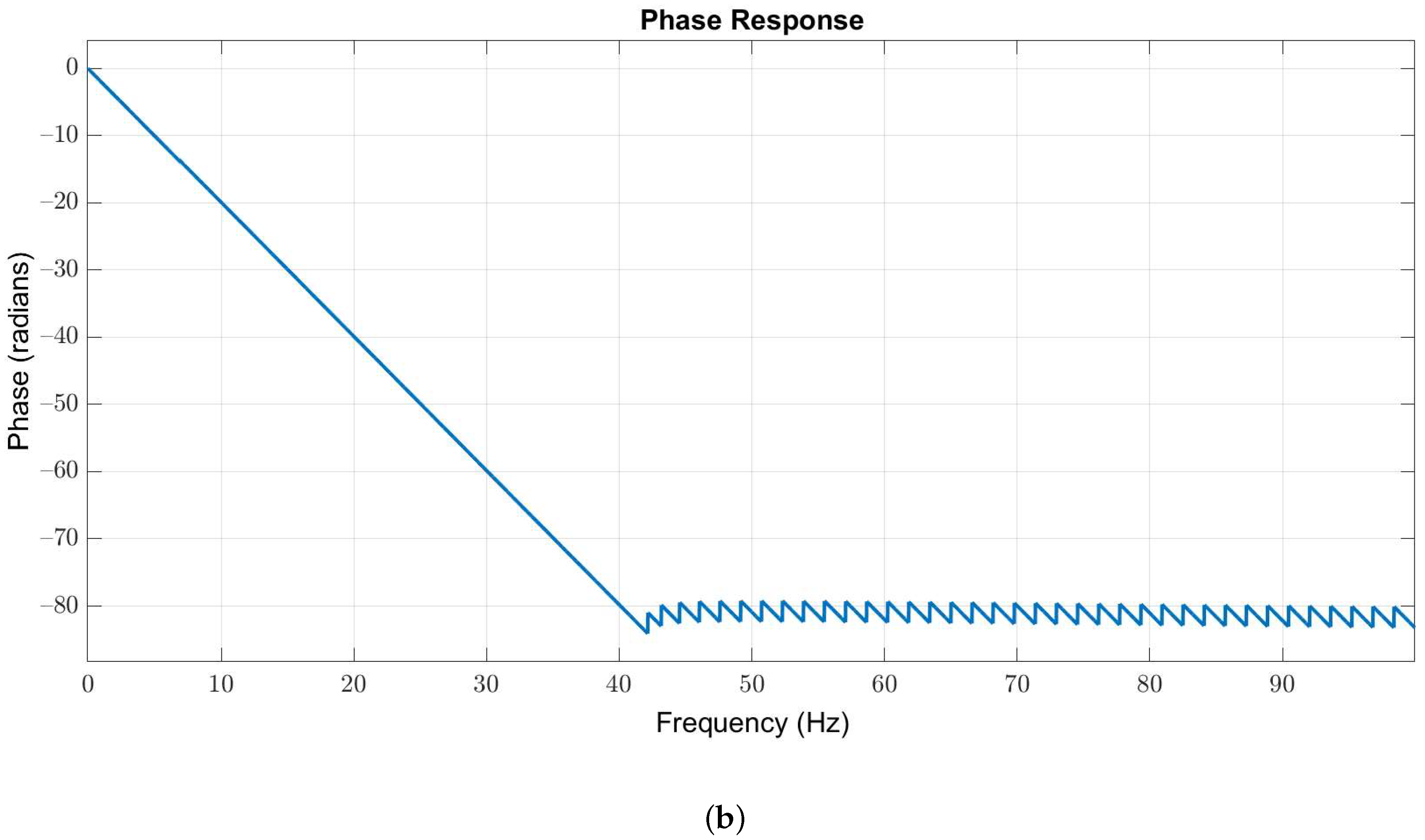
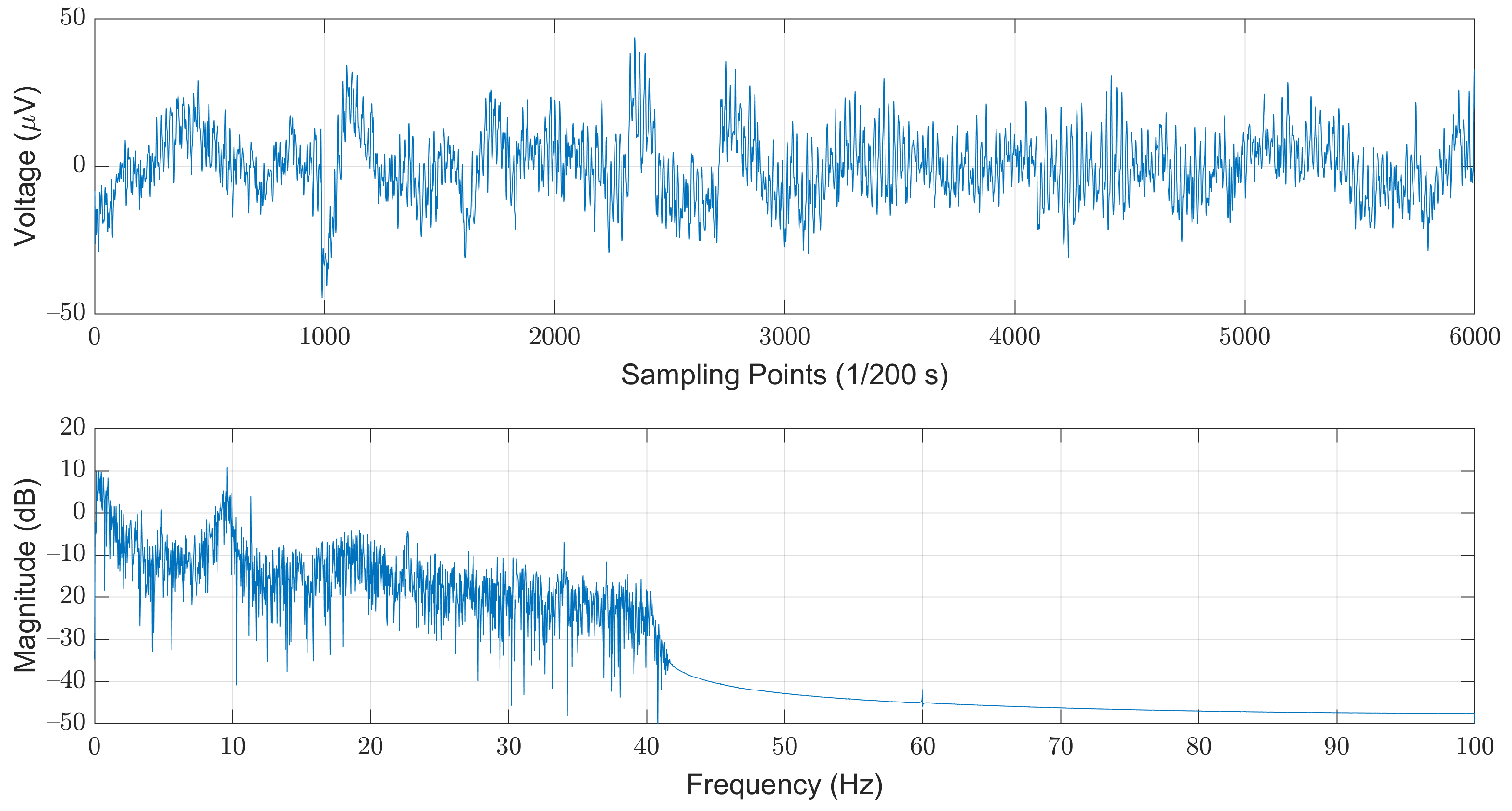
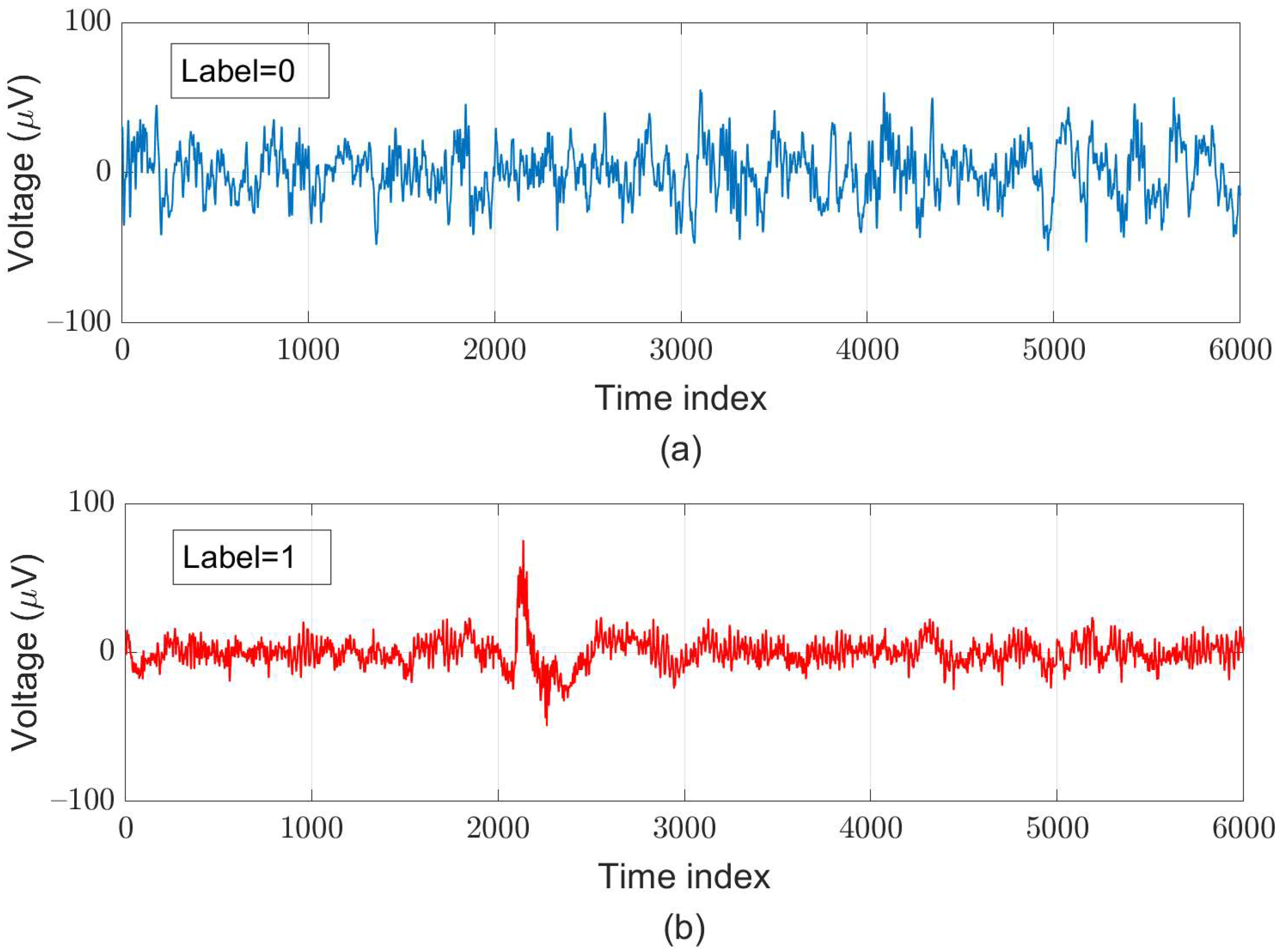
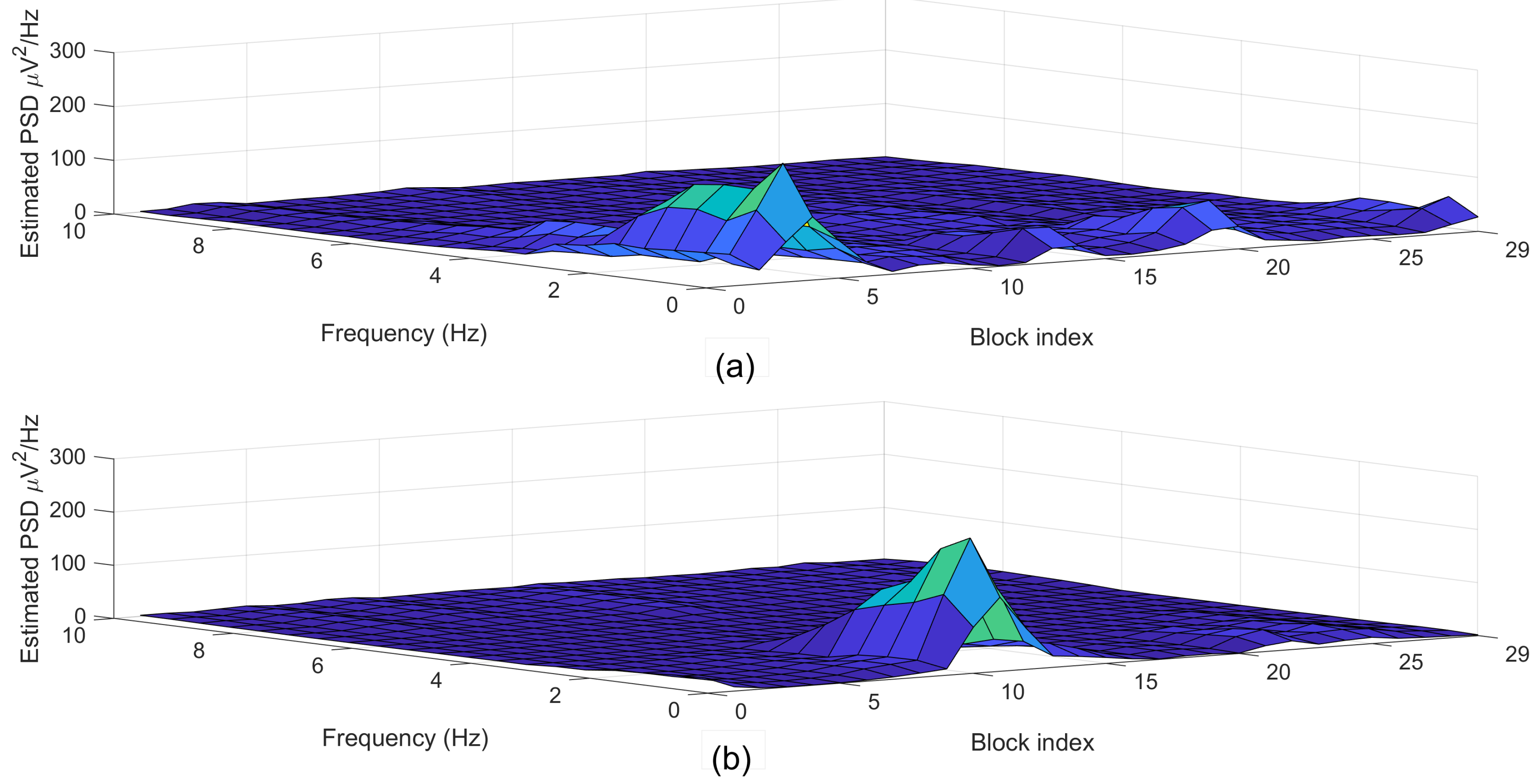
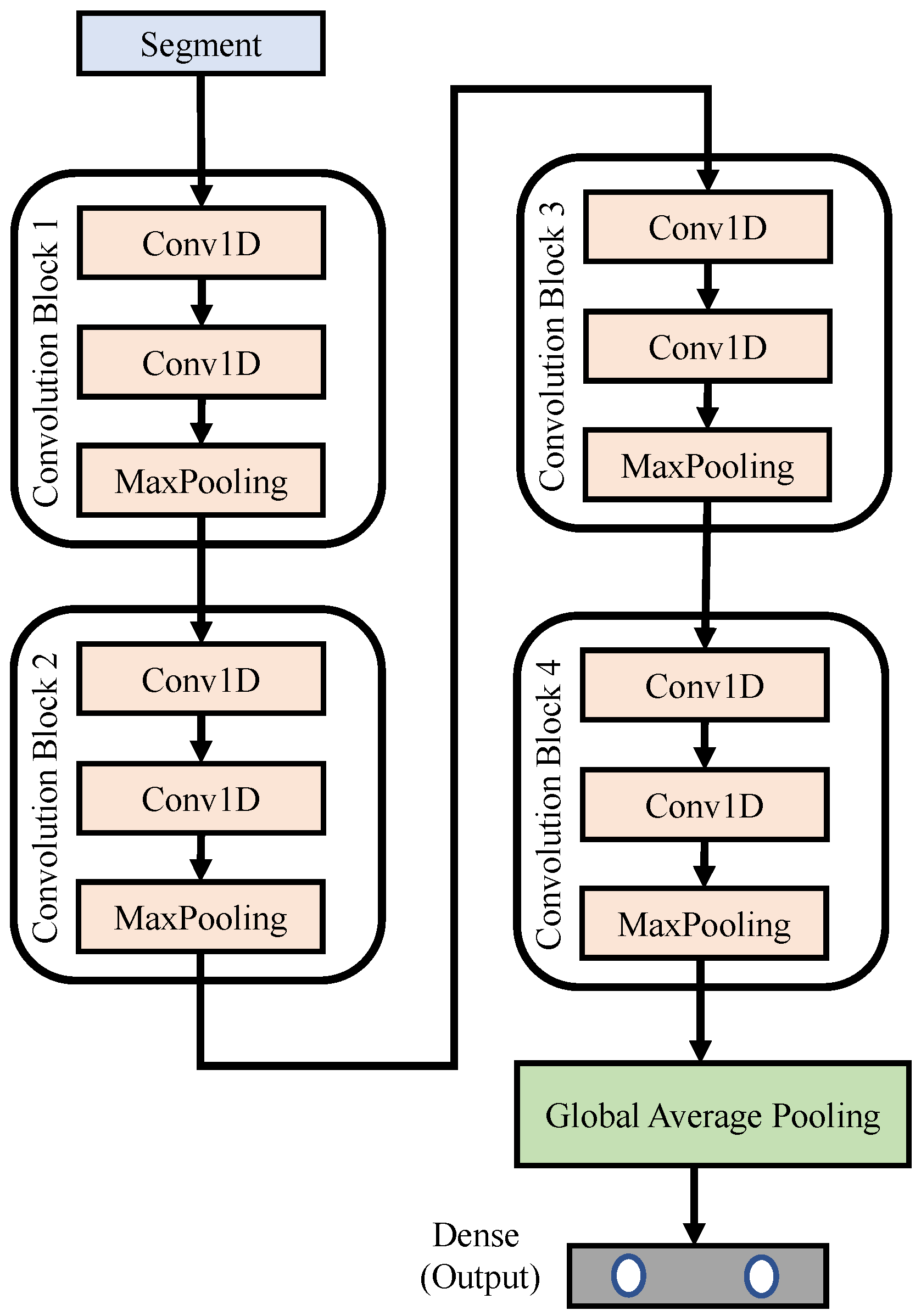
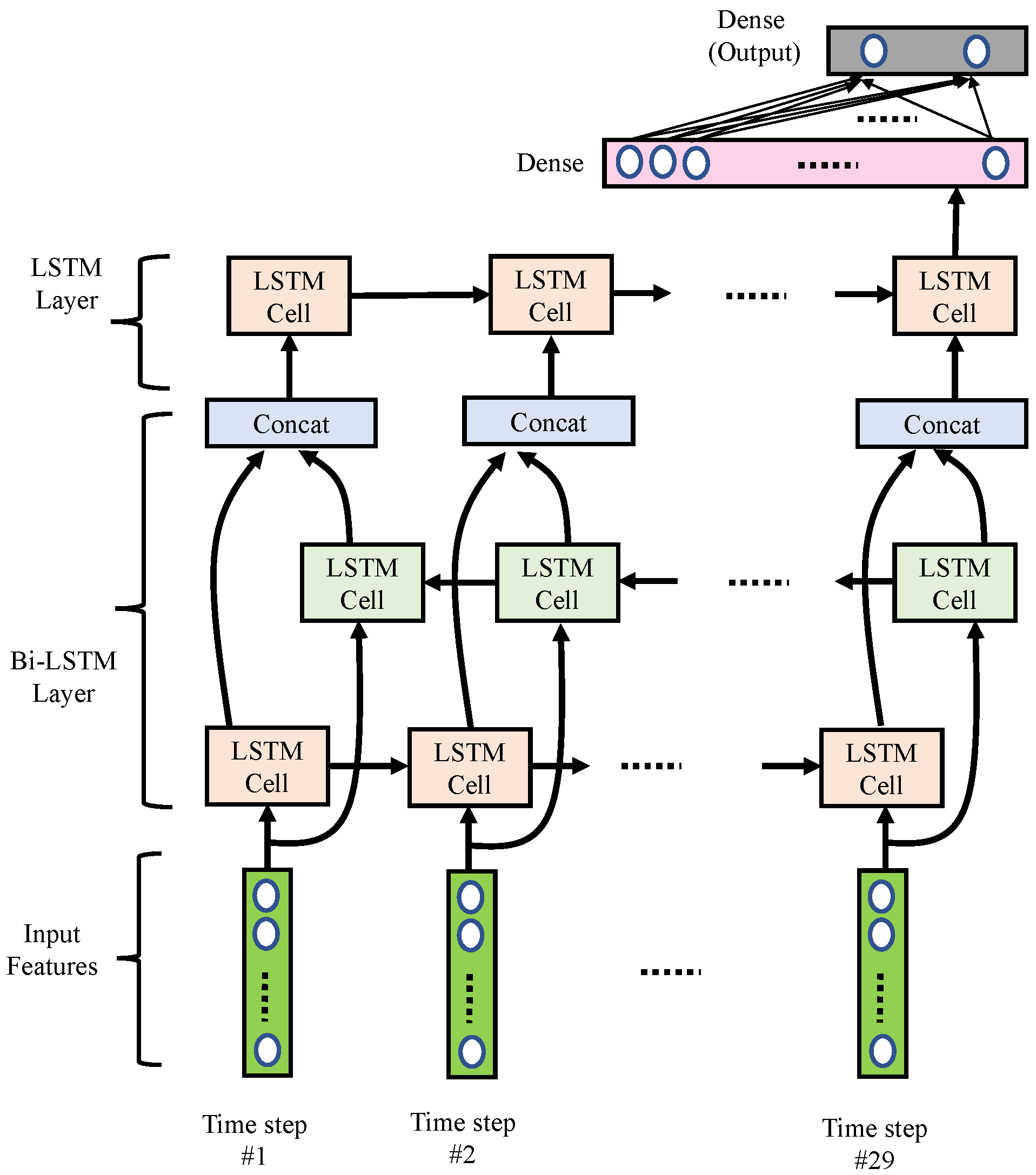
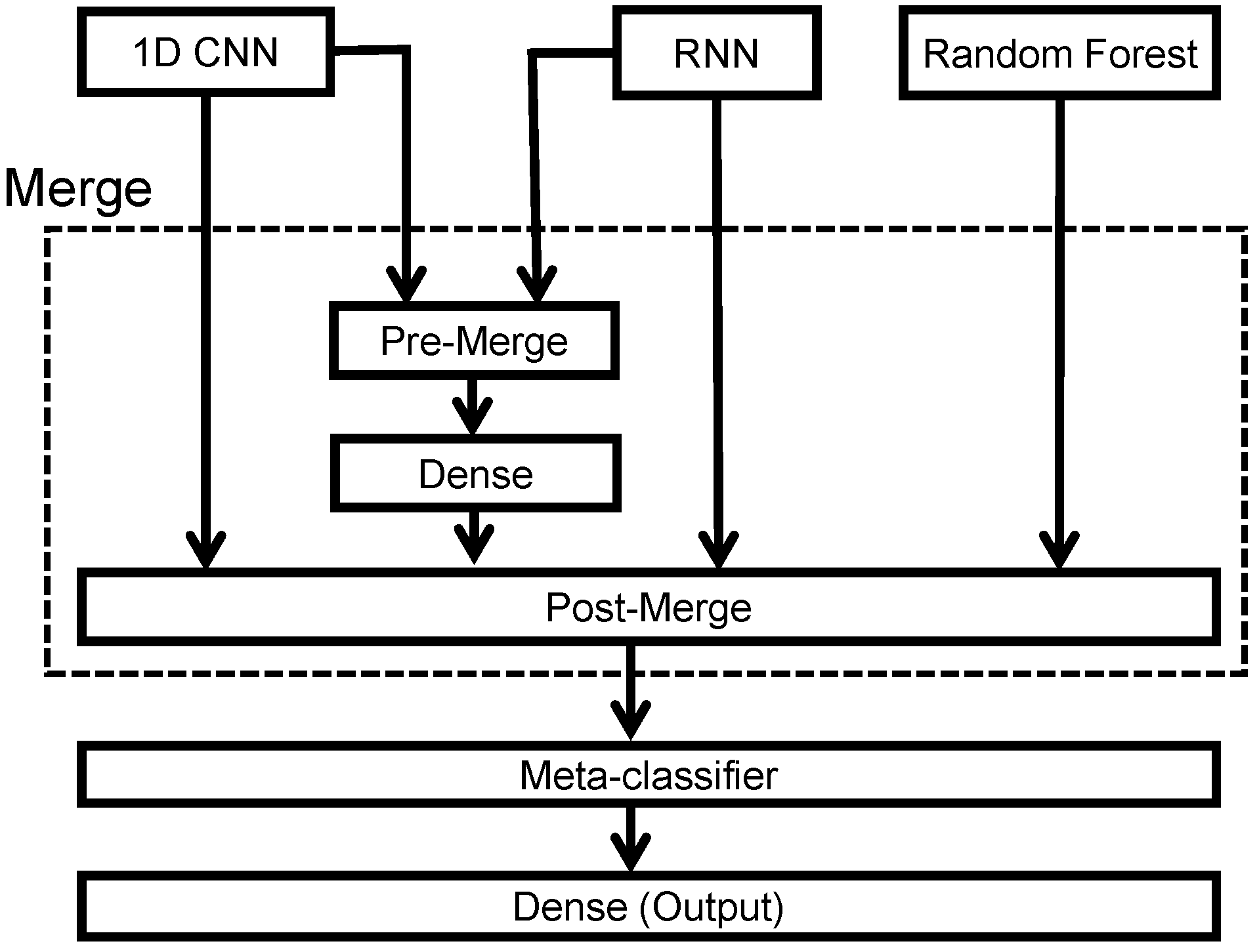
| Band | Frequency Ranges (Hz) | Frequency Bins |
|---|---|---|
| Delta | 0 to 4 | 1 to 9 |
| Theta | 4 to 8 | 10 to 17 |
| Alpha | 8 to 12 | 18 to 25 |
| Beta | 14 to 30 | 30 to 61 |
| Full | 0 to 40 | 1 to 81 |
| Domain | Feature | Number of Features |
|---|---|---|
| Time | Averaged numerical gradient | 1 |
| Kurtosis | 1 | |
| Hjorth parameters | 3 | |
| Skewness | 1 | |
| Frequency | Minimum * | 8 |
| Mean * | 8 | |
| Standard deviation * | 8 | |
| 95th percentile * | 8 | |
| Kurtosis | 4 |
| Layer | Filter Size | Activation Function | Number of Trainable Parameters | Output Shape (x, y, z) |
|---|---|---|---|---|
| Input | - | - | 0 | (N, 6000, 1) |
| Conv1D | 20@ | ReLU | 1020 | (N, 5951, 20) |
| Conv1D | 20@ | ReLU | 20,020 | (N, 5902, 20) |
| Maxpooling | - | 0 | (N, 2951, 20) | |
| Conv1D | 20@ | ReLU | 12,020 | (N, 2922, 20) |
| Conv1D | 24@ | ReLU | 14,424 | (N, 2893, 24) |
| Maxpooling | - | 0 | (N, 1446, 24) | |
| Conv1D | 12@ | ReLU | 5784 | (N, 1437, 12) |
| Conv1D | 12@ | ReLU | 2892 | (N, 1428, 12) |
| Maxpooling | - | 0 | (N, 714, 12) | |
| Conv1D | 12@ | ReLU | 300 | (N, 713, 12) |
| Conv1D | 12@ | ReLU | 300 | (N, 712, 12) |
| Maxpooling | - | 0 | (N, 356, 12) | |
| Global Average Pooling | - | - | 0 | (N, 12, 1) |
| Dense (output) | - | Softmax | 26 | (N, 2, 1) |
| Layer | Number of Hidden State Size | Activation Function | Number of Trainable Parameters | Output Shape (x, y, z) |
|---|---|---|---|---|
| Input | - | - | 0 | (N, 29, 8) |
| Bi-directional LSTM (Bi-LSTM) | 20 | - | 4640 | (N, 29, 40) |
| Uni-directional LSTM | 10 | - | 2040 | (N, 10, 1) |
| Dense | - | ReLU | 352 | (N, 2, 1) |
| Dense (output) | - | Softmax | 66 | (N, 2, 1) |
| Model | CNN | RNN | Random Forest | Pre-Merge | Meta-Classifier |
|---|---|---|---|---|---|
| Specificity (%) | 77.98 | 75.60 | 83.24 | 78.03 | 85.75 |
| Sensitivity (%) | 78.38 | 73.73 | 77.85 | 80.14 | 82.67 |
| Precision (%) | 72.46 | 68.85 | 77.03 | 76.67 | 83.92 |
| Accuracy (%) | 78.15 | 74.81 | 80.98 | 79.03 | 84.92 |
| Model | CNN | RNN | Random Forest | Pre-Merge | Meta-Classifier |
|---|---|---|---|---|---|
| Specificity (%) | 77.48 | 75.35 | 82.14 | 77.43 | 84.64 |
| Sensitivity (%) | 78.34 | 72.31 | 77.51 | 78.60 | 80.10 |
| Precision (%) | 73.36 | 69.53 | 77.21 | 76.79 | 80.56 |
| Accuracy (%) | 77.86 | 74.02 | 80.11 | 78.00 | 82.63 |
| AUROC (%) | 79.97 | 74.97 | 81.54 | 80.23 | 84.01 |
| Work | Year | Method | Number of Patients | Results |
|---|---|---|---|---|
| [7] | 2005 | SVM | 9 | sensitivity: 75.26% specificity: 95.56% |
| [8] | 2007 | SVM | 20 | sensitivity: 79.06% specificity: 89.95% |
| [9] | 2015 | C-ELM | 50 | accuracy: 79.00% AUROC: 85.00% |
| [10] | 2019 | SVM | 5 | sensitivity: 94.67% specificity: 99.33% precision: 97.93% accuracy: 98.20% |
| [11] | 2020 | 2D CNN | 1500 | sensitivity: 67.60% precision: 71.00% |
| This work | 2021 | Stacking Ensemble Learning | 994 | sensitivity: 84.64% specificity: 80.10% precision: 80.56% accuracy: 82.63% AUROC: 84.01% |
Publisher’s Note: MDPI stays neutral with regard to jurisdictional claims in published maps and institutional affiliations. |
© 2021 by the authors. Licensee MDPI, Basel, Switzerland. This article is an open access article distributed under the terms and conditions of the Creative Commons Attribution (CC BY) license (https://creativecommons.org/licenses/by/4.0/).
Share and Cite
Chien, Y.-R.; Wu, C.-H.; Tsao, H.-W. Automatic Sleep-Arousal Detection with Single-Lead EEG Using Stacking Ensemble Learning. Sensors 2021, 21, 6049. https://doi.org/10.3390/s21186049
Chien Y-R, Wu C-H, Tsao H-W. Automatic Sleep-Arousal Detection with Single-Lead EEG Using Stacking Ensemble Learning. Sensors. 2021; 21(18):6049. https://doi.org/10.3390/s21186049
Chicago/Turabian StyleChien, Ying-Ren, Cheng-Hsuan Wu, and Hen-Wai Tsao. 2021. "Automatic Sleep-Arousal Detection with Single-Lead EEG Using Stacking Ensemble Learning" Sensors 21, no. 18: 6049. https://doi.org/10.3390/s21186049
APA StyleChien, Y.-R., Wu, C.-H., & Tsao, H.-W. (2021). Automatic Sleep-Arousal Detection with Single-Lead EEG Using Stacking Ensemble Learning. Sensors, 21(18), 6049. https://doi.org/10.3390/s21186049







